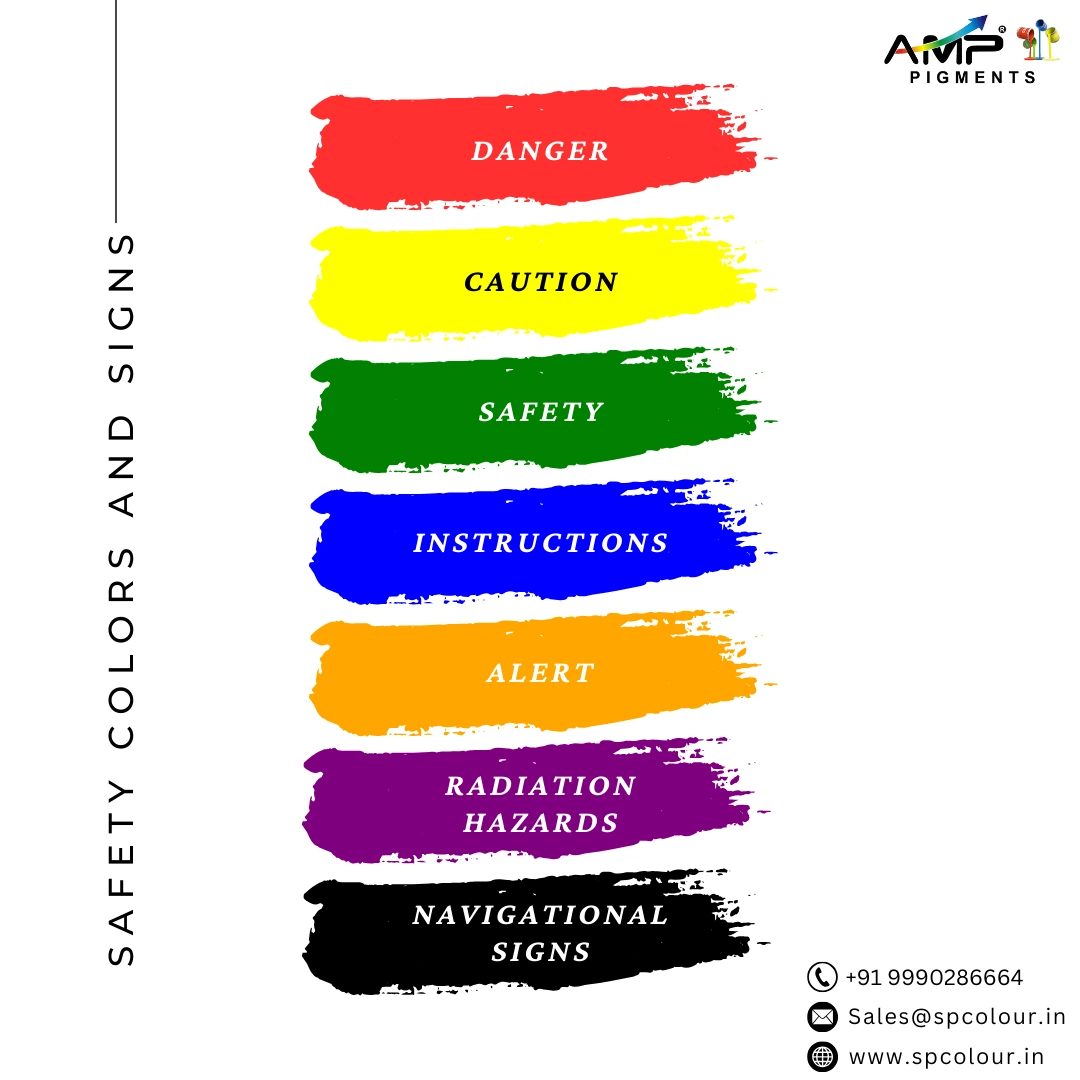Understanding Safety Colors and Signs: A Guide to Using Pigments by SP Colour & Chemicals
Every industry prioritizes safety, and safety colors are essential to preserving workplace security. The colors used in safety signage, which range from strong red warnings to cautionary yellow signs, share vital information that can save everyone’s lives. At SP Colour & Chemicals, we provide premium pearl pigments that are widely used to create safety colors, guaranteeing their longevity, vibrancy, and adherence to safety regulations.
Safety colors serve as a common language in the field of constructions, manufacturing products, hospitality that facilitates the communication of instructions, designated safe locations, and possible hazards. Industries can guarantee effective communication in multilingual or varied workplaces by standardizing these colors. To guarantee consistency in the use of safety colors, regulatory organizations like the American National Standards Institute (ANSI) and the Occupational Safety and Health Administration (OSHA) have established recommendations to everyone to use these colors as a safety purpose.
The importance of safety colors, the pigments that underlie them, and how they are used in signage to improve safety precautions will all be covered in this blog.
Standard Safety Colors and Their Meanings
The following lists frequently used safety colors along with their definitions:
- Red: Denotes emergency procedures, fire safety, and danger. Stop signs, alarms, and fire extinguishers are frequently used.
- Yellow: Stands for prudence and possible dangers. used to indicate areas where machinery poses a risk and to warn of slick floors.
- Green: Denotes emergency exits and safety. located on safe assembly locations, eyewash stations, and first aid stations.
- Blue: Required instructions are indicated in blue. Signs needing personal protective equipment (PPE) typically display it.
- Orange: Used to alert people to potentially hazardous electrical panels and gear.
- Purple & Violet: Areas with radiation hazards are specifically treated with purple or magenta on yellow.
- White and Black: Usually employed for navigational signs, these colors provide broad information.

Pigments Used in Safety Colors
SP Colour & Chemicals manufactures an extensive range of pearl pigments that provide bright, attractive and long-lasting shades for safety applications. The following pigments are frequently used for safety colors:
- Danger Signs in Red
- Pigments like Iron Oxide Red (FeO₃), Cadmium Red, and Organic Azo Pigments are in red color.
- Benefits include superior durability, UV resistance, and opacity.
- Caution Signs in Yellow
- Iron Oxide Yellow, Benzidine Yellow, and Chrome Yellow pigments were used to indicate caution signs.
- Benefits include brightness and ease of visibility in low light.
- Safety Signs in Green
- Iron oxide green, phthalocyanine green, and chromium oxide green are used as safety shades.
- Benefits include Excellent weather and chemical resistance.
- Blue Required Signs
- Cobalt blue, ultramarine blue, and phthalocyanine blue were the pigments used to give blue shades.
- Benefits include Outstanding durability and vibrant color retention.
- Warning Signs in Orange
- Lead Chromate Orange, Benzimidazolone Orange, and Molybdate Orange were the pigments used as warning signs shades.
- Benefits include Vibrant hues that stand out well against a variety of backdrops.
- Information Signs in Black and White
- Carbon Black for black and titanium dioxide for white pigments were used as informative signs.
- Strong contrast and readability are two benefits.

Final thoughts, Compliance and Regulations
Safety colors are essential to workplace safety and serve as more than just a visual assistance. Your safety signs will stay vivid, long-lasting, and legally compliant if you use premium pigments from SP Colour & Chemicals.
Make sure your safety signs adhere to both international and national standards. In India, appropriate color utilization for safety applications is ensured by adherence to IS 5:2007 and BIS (Bureau of Indian Standards). These criteria are met by the pigments that SP Colour & Chemicals offers, providing dependable solutions for many sectors.
SP Colour & Chemicals’ wide selection of pigments can be used to create safety signs for public spaces, industrial facilities, or construction sites. To learn more about our pigment solutions and improve workplace safety, get in touch with us right now.
